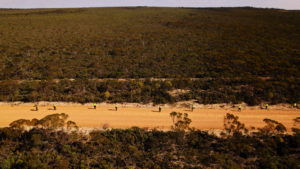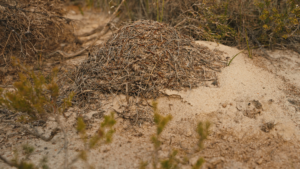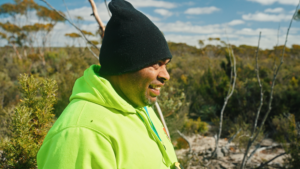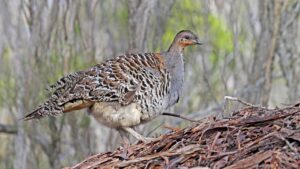In exciting news for one of the region’s threatened species, recently active malleefowl mounds have been found in the eastern Wheatbelt for the first time during the final months of South West NRM’s 5-year tracking program.
The malleefowl is a large, ground-dwelling bird, threatened with extinction because of agricultural land clearing, altered fire regimes, introduced predators, competition with introduced herbivores, and declining rainfall.
South West NRM partnered with Badgebup Aboriginal Corporation to undertake a malleefowl survey at Merilup Nature Reserve, south-east of Kukerin in May. This was the last survey in a program that has been running since 2018. Previous surveys at Mindarabin, Jarring and Corneecup Reserves and two private properties revealed only inactive mounts, suggesting that malleefowl are locally extinct in those regions.
Ten Rangers undertook a grid walk survey over 15 days, searching for malleefowl mounds that are used to incubate eggs. Malleefowl spend up to 11 months a year building and maintaining a large mound of soil, leaves and twigs. Eggs are laid in the mound, buried and incubated, with the male malleefowl continuously monitoring the nest. They use their beaks as a thermometer and add or remove soil to maintain the mound at an optimal temperature for incubation.
A total of 24 potential mounds were found, with three of the mounds appearing to be either active or recently used by malleefowl.
South West NRM Sustainability and Environment Lead, Linda Metz, said, “These important new findings confirm that malleefowl have recently been present in the region and may still be there. Knowing this will enable South West NRM and other conservation groups to design conservation strategies to protect them into the future.”
For more information on the malleefowl tracking project, click here.




